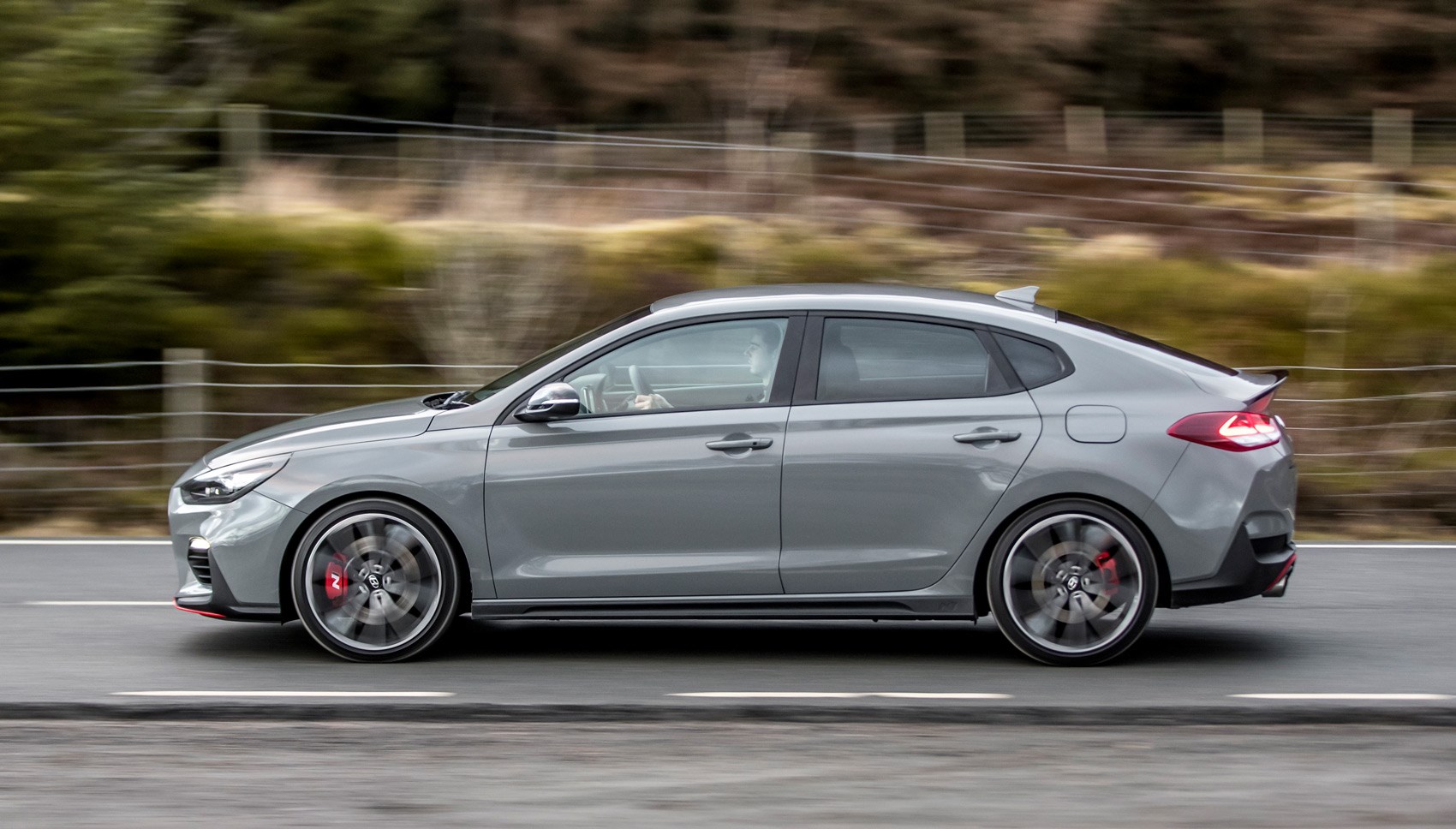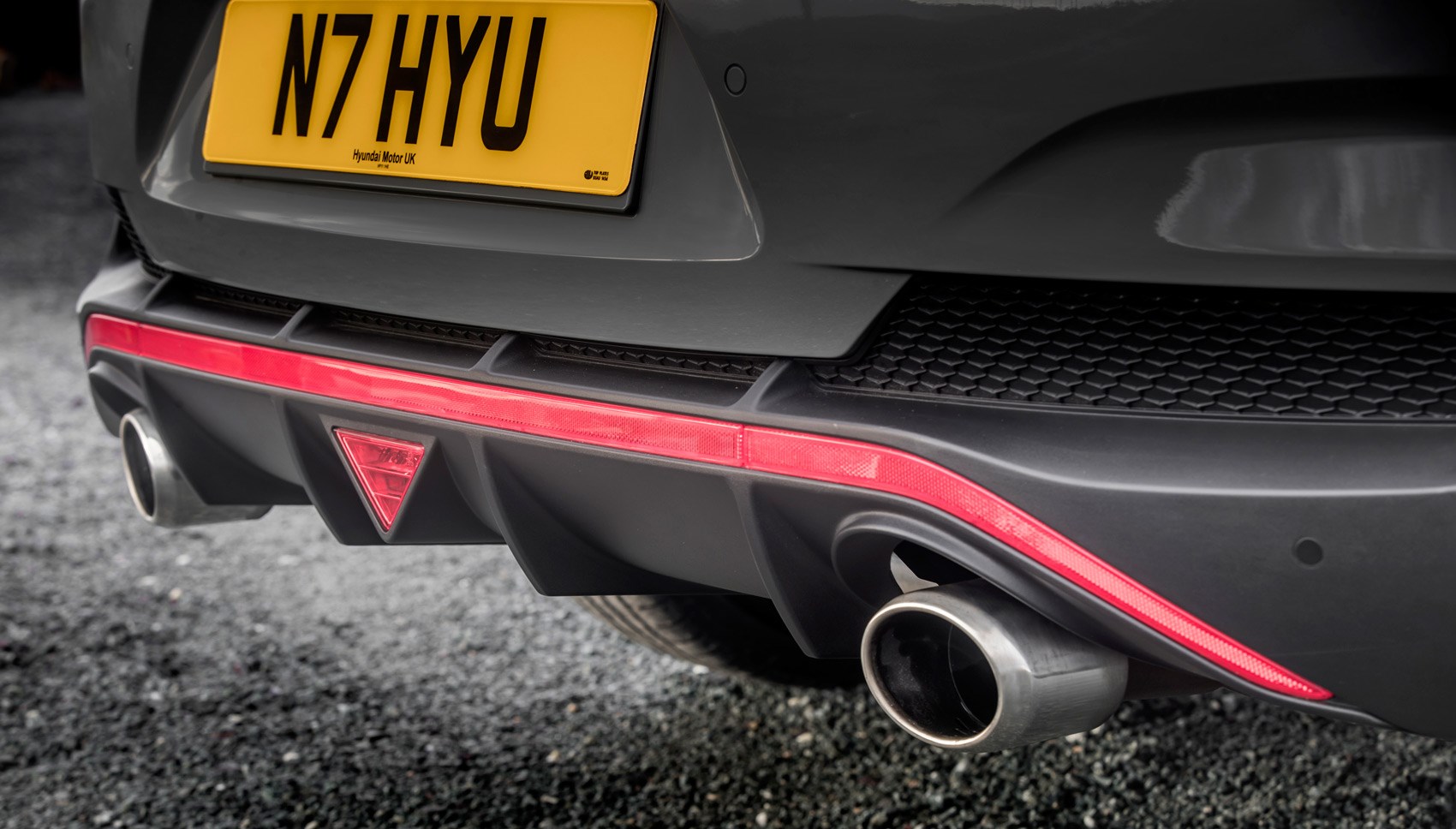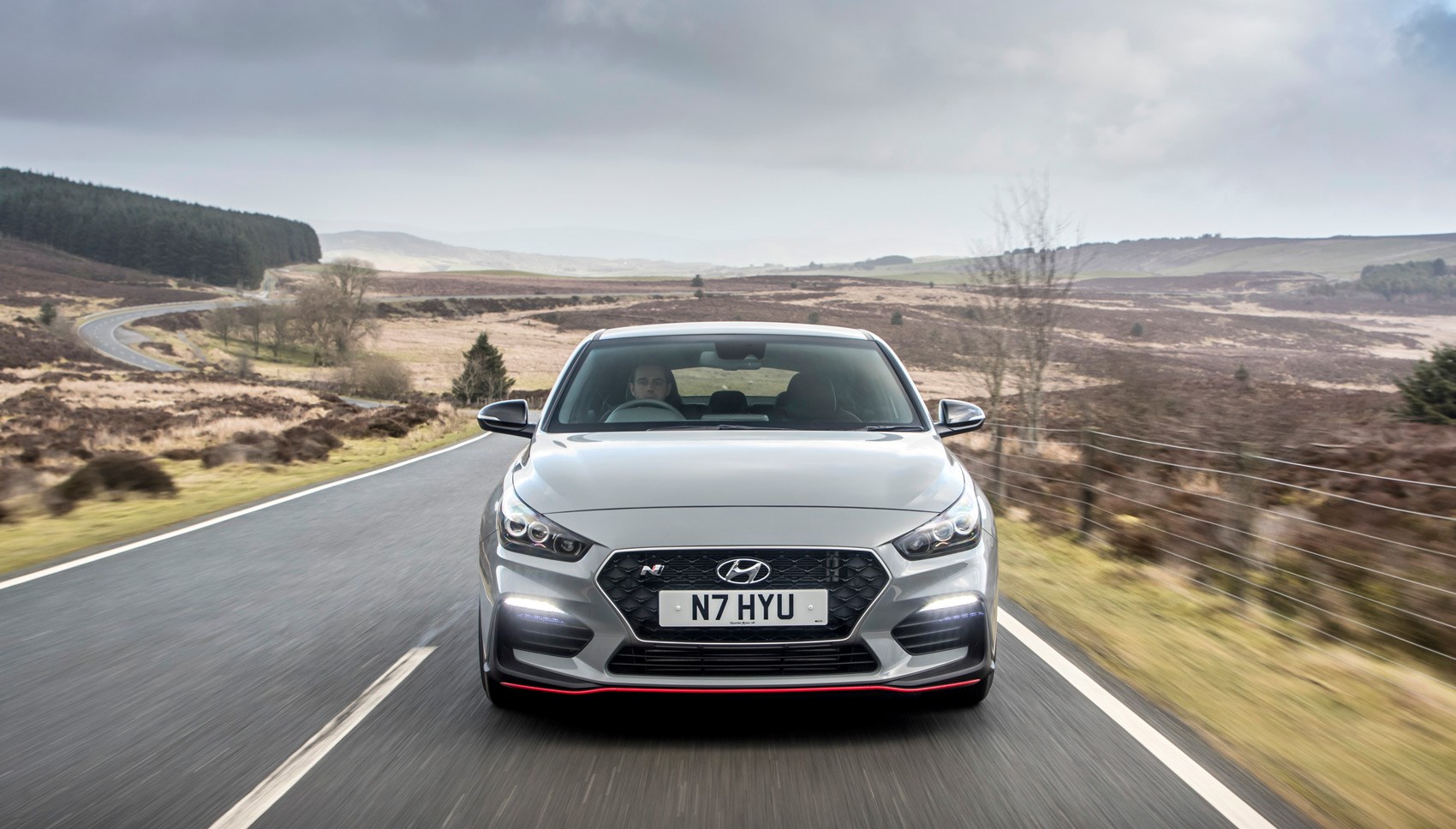► Fastback version of the i30 N
► Only 12kg heavier, more grown-up
► Better than the original hatch?
The Hyundai i30 N hatchback seemingly came out of nowhere, but quickly became a contender for our favourite hot hatch of last year. We ran one for half a year along with a Honda Civic Type R and Ford Focus RS, and although it wasn’t the fastest – it was up there in the fun stakes.
It’s easy to see why the i30 N’s sold 9000 units in Europe alone, and equally easy to see why Hyundai is cashing in on that success with a new body variant of its debut hot hatch. Meet the i30 Fastback N.
What’s a Hyundai Fastback?
It’s a bodystyle already available in lower trim levels – and here it takes the basic i30 N hatch profile but replaces the boxy five-door silhouette with a sloping roofline. An opening rear hatch is retained.

Hyundai says the Fastback is unique as the ‘first hot five-door coupe’ in the C-segment, but it’s a similar relationship to the – far more expensive – Mercedes A45 AMG hatchback and its sleeker CLA 45 AMG ‘coupe’ and ‘shooting brake’ siblings, we’d say. Fastback variants are predicted to account for around 30-40% of i30 N sales going forward.
What are the spec ingredients for the Hyundai i30 Fastback N?
The Fastback sits on the same 2650mm wheelbase as the hatchback, but it’s 120mm longer and 21mm lower, and the more slippery shape improves on the five-door’s drag coefficient of 0.320 Cd to 0.297 Cd. Despite the extra length, Hyundai says there’s only 12kg extra mass over the rear axle of the longer car – the total weight penalty, though Hyundai quotes the same 1429-1509kg range for both models.
The drivetrain remains a 2.0-litre turbo four with a six-speed manual gearbox and front-wheel drive. However, the Fastback is available only in one spec – the highest – where the i30N hatch comes both in entry-level N and extra-cost N Performance. That means the Fastback is equipped as standard – in the UK at least – with 271bhp, 19-inch alloys, electric heated memory driver’s seat and ‘faux suede’ alongside some real leather trim. Other niceties include LED head- and tail lights, cruise control, keyless entry and go, and an eight-inch touchscreen with sat-nav.

An electronically controlled limited-slip differential, adaptive dampers, launch control and a range of driving modes from Eco through to a customisable ‘N’ mode are yours with a press of a button on the steering wheel.
Hyundai says spring rates are softened 5% at the front, the front anti-roll bar is 0.8mm thinner, and the bump stops are both 6mm longer and 10% softer compared with today’s i30 N hatch. These hardware changes will, however, also be rolled out on the hatch shortly, though the ESC, steering, diff tuning and dampers will all receive a slightly different to tune to go with the different bodystyle.
There are no claims for stiffness versus the two body shapes, but there is a ‘stiffness’ bar fitted in the rear of the Fastback, as there is in the hatch, increasing stiffness 6%. There are extra weld points in the bodyshell too.
What’s the price?
The Fastback N starts from £29,995, compared with £25,995 for the hot hatch. But adjusted like-for-like with the hatch spec’d in N Performance trim, that £4k gulf shrinks to a £500 premium. It’s also almost £900 more than the – less powerful – Golf GTI five-door manual, and over £2k more than the – similarly powerful – Megane RS. Serious competition, in other words.
CAR magazine scoops the new 2019 VW Golf GTI
First impressions?
While clearly derived from the hatchback, the Fastback does look a more sophisticated, grown-up car. The understated bodykit complements this feel – unique bumpers, chunkier sideskirts, red pin striping at the bottom of the front and rear bumpers, and an E46 M3 CSL-like rear spoiler. It’s purposeful without being too OTT. Does it look a bit stumpy? It does a bit.
Inside, the driver’s seat offers good support and comfort, though it’d be nice to drop the seat lower. The aggressive rake of the rear screen does make rear visibility notably worse than the hatch – if far from problematic – and the arc of the roof pinches a little headroom for rear-seat passengers, though at 6ft 1in I can still sit behind myself without being cramped. Boot space increases versus the hatchback, from 395 to 450 litres.
The rest feels much like the hatchback – sensibly laid out and solidly put together, with decent touchscreen infotainment, if let down by cheap, hard plastics.
How does it drive?
The Fastback N quickly sets quite an aggressive tone: the clutch is pretty butch, the steering has a weighty, meaty detail straight off centre, the engine has a gruff, purposeful rumble and the ride feels firm and just a little agitated, even on a smooth motorway in Normal mode.
Driven enthusiastically over a twisting mountain road, the Fastback impresses. High levels of front grip, good body control and quick, precise steering with robust if far from over-bearing weighting provides confidence to really lean on the chassis, and there’s even throttle adjustability to manipulate the rear end – lift the throttle mid-corner and the Fastback enthusiastically tightens its line. Despite cheaper floating calipers, the brake pedal feel is good and stopping power strong.

The 2.0-litre turbo engine delivers good response and flexibility, pulling keenly from 2000rpm and revving out eagerly, but this is a quick rather than truly rapid car. Even so, the front axle works hard – there was only a small amount of scrabble and torque steer on bone dry roads on the Gran Canaria launch, but experience with the hatch tells us that will obviously amplify in damper conditions. A Civic Type R is both quicker and better able to deploy power.
Gear changes are pleasingly slick, though it’s a shame the brake and accelerator pedal are far enough apart to make heel-and-toe downshifts hard to execute perfectly. A rev-matching function can do that for you, thankfully, and word is there’ll be a dual-clutch option ‘soon, but not this year’ according to an engineer. Overwhelmingly, though, the i30 Fastback N feels highly composed, but also responsive and playful. It’s an enjoyable, engaging car to drive hard down a challenging road.
Hyundai i30 Fastback N: verdict
If you want something more grown up than the boy racer hatch, the Fastback N is well worth considering. It costs just £500 more than an i30N hatch in N Performance trim, looks more mature, has a larger boot – if slightly less rear headroom – and drives with comparable fun and energy. But it does take Hyundai even further into serious territory in terms of price, and makes the standard i30N hatch seem even better value at £25,995. Hardly anyone buys that variant –because everyone upgrades to N Performance spec – but we still rate it as the sweetest i30N of all.
More Hyundai car reviews